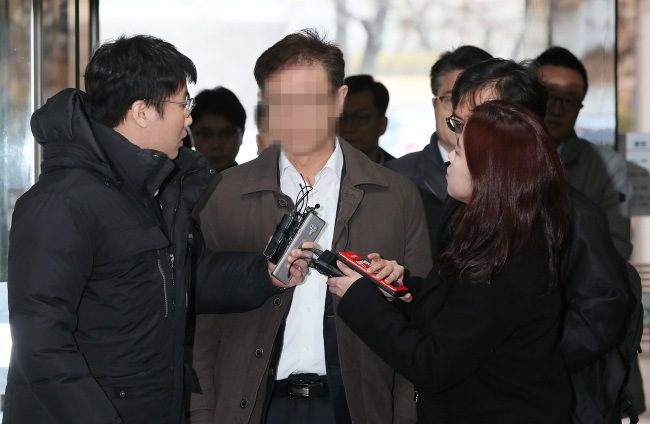However recently resumed investigations by prosecutors point to the notion that SK Chemicals may have removed evidence that they knew of the dangers. They also suspect the company lied during the 2016 parliamentary hearing.
The National Assembly hearing at the time had asked SK Chemicals about its former incarnation, Yukong, having sought expert opinion in 1995 on the safety of CMIT and MIT from Seoul National University. When asked to provide the results of the consultation, SK Chemicals chief Kim Cheol had said he could not provide the reports as they were unable to locate them. The university was also unable to hand over the results.
They added that they did not know about Oxy’s intended use of PHMG and PGH.
SK Chemicals was the first in South Korea to develop a humidifier disinfectant in 1994.
As demand for humidifier disinfectants increased, Oxy, originally an affiliate of Korean chemicals corporation OCI, released its own product called Humidifier Guard in 1996.
More companies joined the trend. The Korea Federation for Environmental Movements identifies 43 brands of humidifier disinfectants that sold approximately 10 million units from 1994 until 2011, when the government ordered them pulled from shelves.
Oxy products were the most popularly used, accounting for 54 percent of units sold, according to KFEM. Following were SK’s Aekyung products at 17 percent and LG Household & Health Care at 11 percent. Seven of the 43 humidifier disinfectant models were in-house brands sold by Lotte Mart, E-mart, Homeplus, GS Retail and Daiso.
Between 2000 and 2011, mysterious deaths and lung injuries ensued, particularly in pregnant women and infants. In 2011, the Korea Centers for Disease Control announced that the results of its epidemiological study indicated that humidifier sanitizer products may be the cause.
Later in the same year, the Korean government ordered a recall of all humidifier sanitizer products. The Ministry of Environment in 2013 announced relief plans for the victims of the case.
According to a report published by Korean scholars in 2017 at the National Center for Biotechnology Information in the US, 67 percent of humidifier disinfectant-associated lung injury patients in Korea developed symptoms in less than one year of product use. The most frequently used product among confirmed patients contained the chemical compound PHMG, followed by PGH and a mixture CMIT and MIT.
The KCDC reported in 2014 that the number of deaths and injuries associated with humidifier disinfectant use amounted to 361, of which 161 were classified as category 1 -- “almost certainly” -- or category 2 -- “very probably.” A second round of the investigation identified another 169 cases, of which 49 were classified as category 1 or 2 victims. Additionally, four cases from the first round were reassessed and reclassified as category 1 or 2.
For the third round in late 2015, the KCDC looked at another 752 cases. The Korea Environmental Industry and Technology Institute said about eight months later that 165 out of the 752 applicants had been assessed, among whom 35 were categorized as category 1 or 2.
The results for another 188 people among the 752 in the third round of applicants were released in January 2017, adding 18 more to the toll of category 1 or 2 victims. Three more category 1 or 2 victims would be added out of 99 completed assessments two months later.
The week before the January 2017 results, Korea’s criminal court found Oxy, Lotte Mart and Homeplus guilty of having violated the Fair Labeling and Advertising Act.
The National Assembly passed the Humidifier Sanitizer Damage Relief Act in August that year, designating a special relief fund of 125 billion won ($110 million). Oxy’s contribution is estimated to be about 70 billion won.
SK Chemicals and Aekyung have yet to contribute.
In December 2017, the Fair Trade Commission’s Chairperson Kim Sang-jo issued an apology for neglecting to hold SK Chemicals and Aekyung accountable. In February last year, the FTC issued a fine of 134 million won against SK Chemicals, Aekyung and E-mart, and handed the case for SK Chemicals and Aekyung to prosecutors, which has led to the resumption of investigations in 2019.
“It is too early for us to say anything,” an SK Chemical representative said on March 6, referring to the still ongoing investigation to determine the company’s liability in the matter. The official added, “We are continuing to hold both regular and occasional meetings with the victims.”
While prosecutors investigate, the victims’ group questions whether it is appropriate for compensation to apply only to those afflicted with lung fibrosis, damage to embryos or asthma.
“Take fine dust for an example. Breathing in microdust for a prolonged time can lead to rhinitis, bronchodilatation or even encephalopathy,” said Kim Ki-tae, a representative for the victims’ network and a Los Angeles-based lawyer.
“Exposure to humidifier disinfectants was much more severe than fine dust problems. It was breathing in poison without a filter,” Kim said, arguing for the vast volume of people who have developed various ailments after using humidifier disinfectants to be recognized.
More than 6,000 people applied for the government-led compensation scheme, however, less than 800 have so far had their claims approved.
By Lim Jeong-yeo (
kaylalim@heraldcorp.com)








